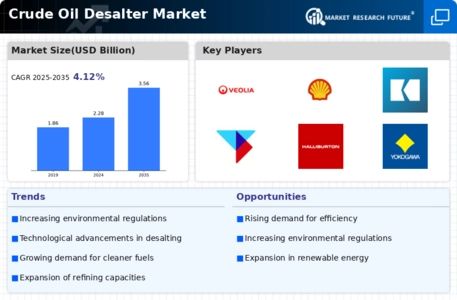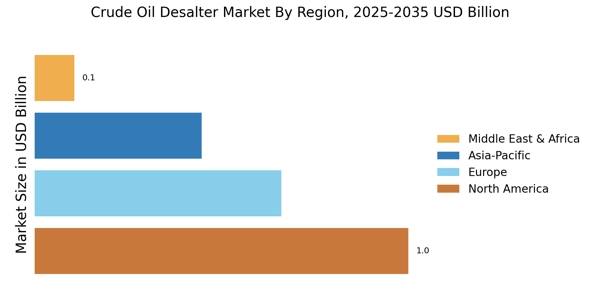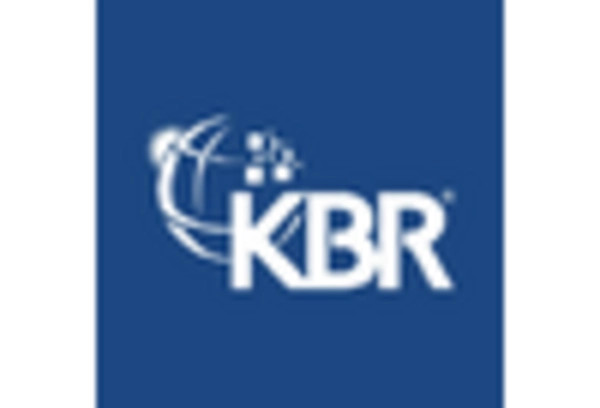Increasing Demand for Refined Products
The rising The Crude Oil Desalter Industry. As economies expand, the need for gasoline, diesel, and jet fuel surges, necessitating efficient crude oil processing. In 2025, the demand for refined products is projected to increase by approximately 3% annually, compelling refiners to invest in advanced desalting technologies. This trend indicates that refiners are likely to prioritize the installation of modern desalters to enhance product quality and meet stringent regulatory standards. Consequently, the Crude Oil Desalter Market is expected to experience robust growth as refiners seek to optimize their operations and improve yield efficiency.
Investment in Refinery Upgrades and Expansions
Investment in refinery upgrades and expansions is a crucial factor propelling the Crude Oil Desalter Market. As refiners seek to enhance their processing capabilities and meet evolving market demands, many are undertaking significant capital projects. These upgrades often include the installation of state-of-the-art desalting units to improve operational efficiency and product quality. In 2025, the market is likely to benefit from increased capital expenditures in the refining sector, as companies aim to modernize their facilities. This trend suggests a positive outlook for the Crude Oil Desalter Market, as refiners prioritize investments that enhance their competitive positioning.
Technological Innovations in Desalting Processes
Technological advancements in desalting processes are significantly shaping the Crude Oil Desalter Market. Innovations such as electrostatic desalting and advanced chemical treatments are enhancing the efficiency and effectiveness of salt removal from crude oil. These technologies not only improve the quality of the final products but also reduce operational costs. In 2025, the market is expected to witness a shift towards more automated and intelligent desalting systems, which can optimize performance and minimize downtime. As refiners seek to enhance their competitive edge, the adoption of these cutting-edge technologies will likely drive growth in the Crude Oil Desalter Market.
Regulatory Compliance and Environmental Standards
Stringent environmental regulations are increasingly influencing the Crude Oil Desalter Market. Governments worldwide are implementing stricter guidelines to minimize the environmental impact of oil refining processes. For instance, regulations concerning the removal of salts and impurities from crude oil are becoming more rigorous, pushing refiners to adopt advanced desalting technologies. The market for desalters is projected to grow as refiners strive to comply with these regulations, which may include penalties for non-compliance. In 2025, the Crude Oil Desalter Market is likely to see a surge in demand for technologies that not only meet but exceed regulatory requirements, thereby enhancing operational sustainability.
Rising Oil Production from Unconventional Sources
The increase in oil production from unconventional sources, such as shale oil and tar sands, is a significant driver for the Crude Oil Desalter Market. These sources often contain higher levels of impurities, necessitating advanced desalting solutions to ensure product quality. As production from these unconventional sources continues to rise, refiners are compelled to invest in efficient desalting technologies to process the crude oil effectively. In 2025, the market is anticipated to expand as refiners adapt to the challenges posed by unconventional crude, thereby driving demand for innovative desalting solutions within the Crude Oil Desalter Market.


















Leave a Comment